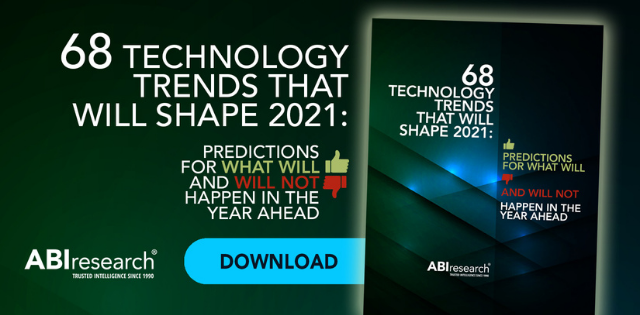2021: Year of the Cold Chain
With COVID-19 vaccine production complete and distributors urgently looking for ways to transport it safely, all eyes are on the effectiveness of the cold chain. Early vaccine candidates require ultra-low temperatures, as much as -70 degrees Celsius©, or -94 degrees Fahrenheit. This is influenced by a lack of data storage specifications and shelf life for these new types of Messenger RNA (mRNA) vaccines. The containers to store and transport them are not widely available and not required for common vaccines. Constant temperature control is needed E2E from the manufacturing site to the inoculation sites.
According to known criteria, people will require two vaccines from the same manufacturer within a specific time frame. That equates to more than 662 million doses in the United States and approximately 1.5 billion across the European population. Drug companies like Pfizer and logistics giants DHL and UPS are working together on expected supply chain gaps, including logistics and freezer farms.
Questions remain about the providers of these ultra-cold freezers. One such company is Cryoport, with its C3 Ultra Cold solution dry ice shipper that can keep commodities at temperatures of -60 to -90° C. These suppliers are not particularly large companies. And not many offer transportable options (versus upright freezers from ThermoFisher Scientific). In question is their ability to scale or the capabilities of their supply chain down to the raw materials. Much of the focus, to date, has been on fulfilment centers and modal capacity for air and road.
Another concern is the need to seamlessly track temperatures and provide alerts for any out-of-spec loads. This involves integrated software, sufficient compute and sensor capabilities throughout, and the cooperation of both public and private entities across multiple modes and likely competitors. The search for critical Personal Protective Equipment (PPE) and ventilators this spring unveiled dependencies on China sourcing, challenges scaling at a global level, and a lack of awareness of suppliers’ suppliers. The scale of technology, strategy, and operations excellence needed will require transparency, flexibility, and scale never seen, and will take herculean efforts beyond the actual vaccine development and approval.
No Optimism for Supply Chain Normalcy in 2021
When COVID-19 arrived, supply chain trends were either in the early stages of implementation or planned—for 5 years from now. Companies that were not prepared to pivot quickly to digitization, automation, and a contactless consumer scrambled to respond. Many companies became acutely aware of the complexities of their supply chains, from workforce capabilities, distribution networks, and modal restrictions down to their raw materials suppliers. Concurrently, the adoption of digital and low/no-contact behaviors shifted exponentially and rapidly, becoming ingrained this year for many.
One area receiving attention is the reconfiguration of supply chains geographically (China+1, near-shoring, etc.), which is a longer-term strategy. Investments and partnerships are proliferating from Vietnam and India to Mexico and beyond. However, beyond a sales office, many considerations remain, including regulatory, infrastructure, and employee skillsets/wages regarding the need for an extended ecosystem, which has been developed in China for the last 10 to 20 years. It is important to consider geographic diversity, which will likely reframe many supply chains over the remaining decade. U.S. e-commerce growth is estimated to be -44% year-on-year in 2020.
Consumer expectations continue regarding fast delivery, a variety of delivery options, and free shipping. These changes include continued curbside pick-up and Buy Online Pay in Store (BOPIS) options, as well as last-mile deliveries, the latter of which poses a profitability issue for retailers. Government exemptions for Automated Ground Vehicles (AGVs), including Nuro and Starship Technologies, will continue to support options for lower costs, less contact, and greater choice for consumers. Another lasting change is underway with Consumer-Packaged Goods (CPG), which have been materially reducing their SKUs to those with the highest volumes. Coca-Cola is eliminating half of the number of brands it produces. Mondelez International is reducing its line-up by 25%, with further reductions planned by both Procter & Gamble and General Mills.
It remains to be seen how this will impact consumers accustomed to actual and virtual shelves with nearly unlimited variety. Finally, even the latest mid-range Gross Domestic Product (GDP) estimates anticipate a slower return to pre-pandemic growth levels, accounting for time to bring back entire industries/verticals that were decimated. Some airlines are not expecting to return to earlier levels before 2024, and an historic number of retailers and restaurants have closed permanently. Although goods transportation has seen a promising rebound from the spring, pinch points continue, from driver shortages (back to 2018 levels) to container shortages and carrier bankruptcies due to increasing insurance costs and lower profits. Further digitization and integration of systems will provide greater visibility, flexibility, and ROI to supply chain participants that can improve economic performance, but likely after 2021 on a broader scale.
For more trends and predictions that will—and will not— happen in 2021, download the whitepaper 68 Technology Trends that Will Shape 2021: Predictions for What Will and Will Not Happen in The Year Ahead.

